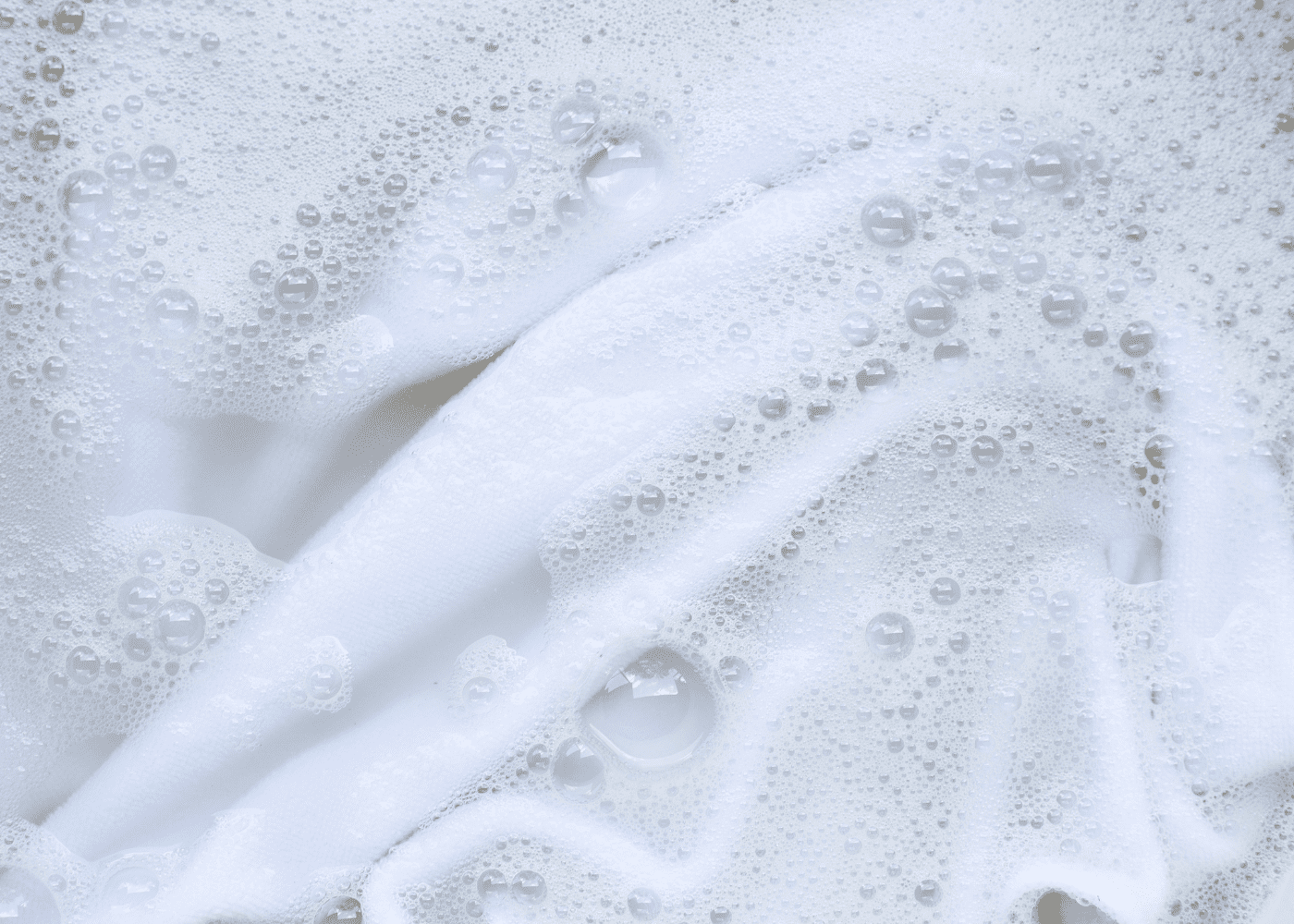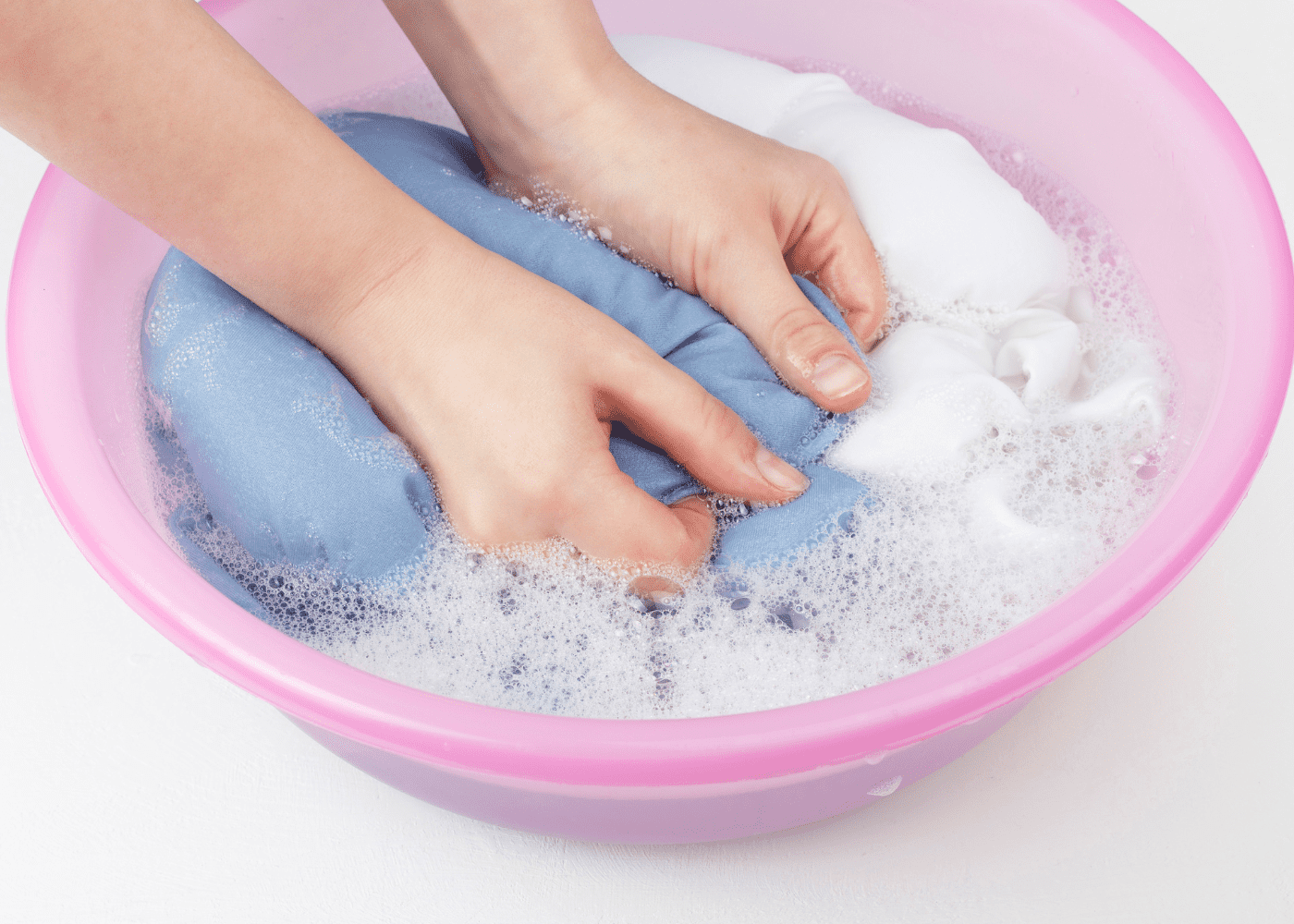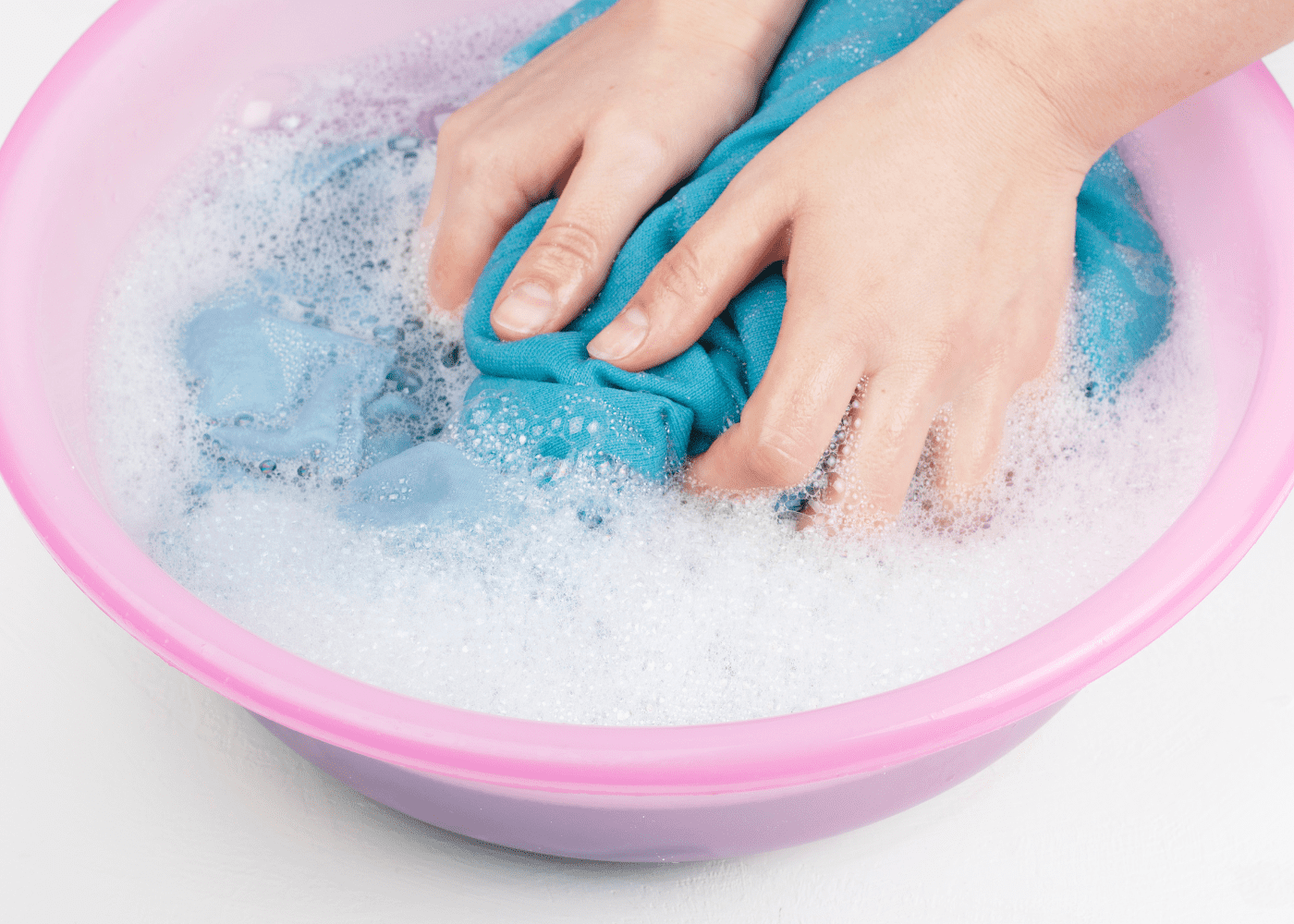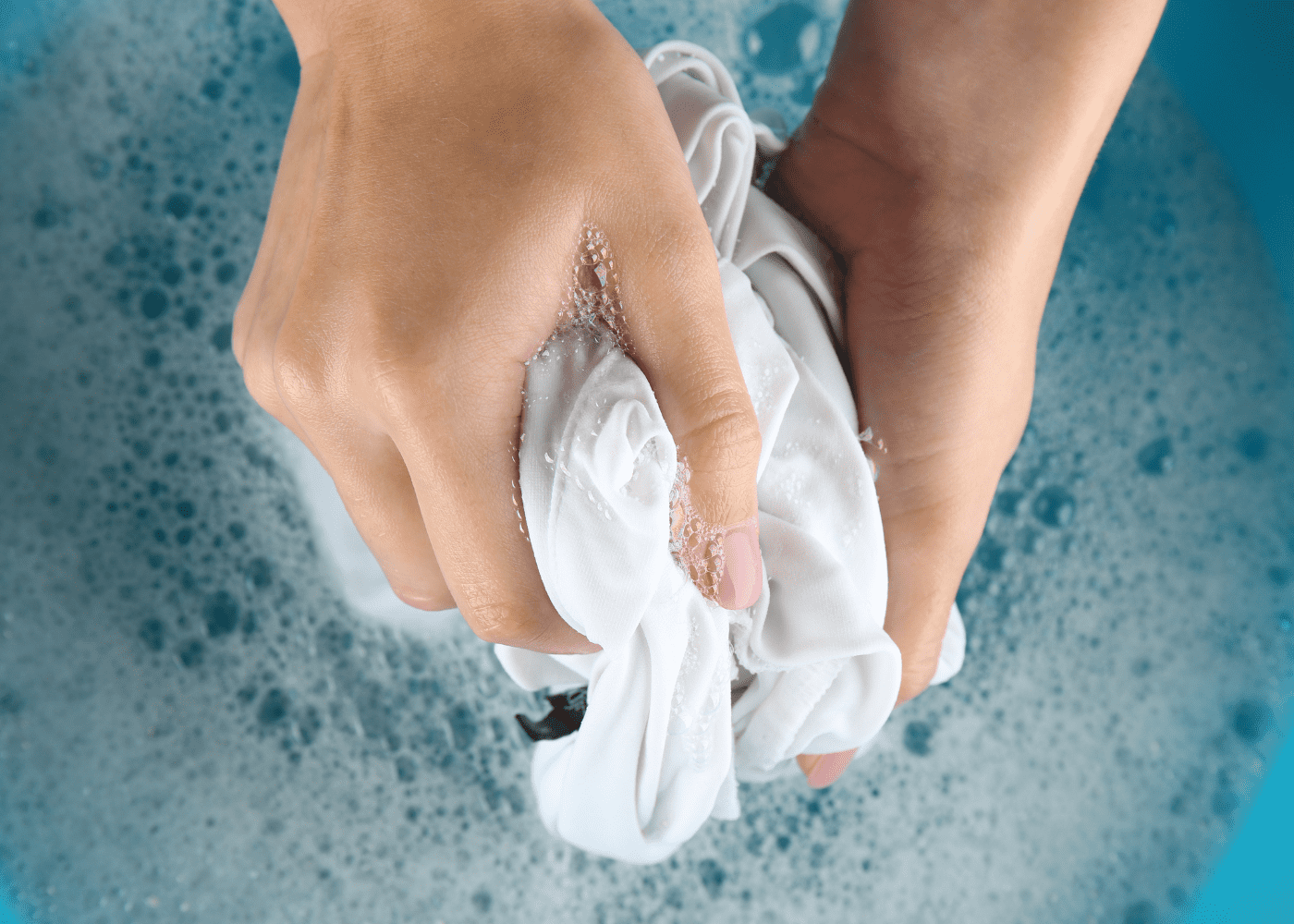Hand-washing clothes is a simple and effective way to keep your clothes clean and looking their best. Whether you are trying to save money on your utility bill, avoid the damage of machine washing, or have delicate fabrics that require special care, learning how to hand wash clothes may be important to you.
In this article, we will provide you with a step-by-step guide on how to hand wash clothes, as well as some helpful tips and tricks to make the process easy and efficient.
How to hand wash clothes like a pro: A detailed guide
In this day and age, many of us have become accustomed to using washing machines to do our laundry. However, there are certain items of clothing that require more delicate care, or fabrics that are too fragile for the rough and tumble of a machine wash.
In these instances, knowing how to hand wash clothes can be invaluable. Hand washing clothes not only allows for gentle care of delicate fabrics, but it also saves energy and money.
For more home cleaning advice, check out this post: Quick and easy house cleaning tips
Benefits of hand washing clothes
Hand washing clothes has a number of benefits, including:
- Saves money on your utility bill
- Avoids damage caused by machine washing
- Allows for special care of delicate fabrics
- Offers a more environmentally-friendly option (if you use cold water)
- Provides a thorough cleaning for heavily soiled clothes
Washing your clothes by hand will use considerably less water than using a machine but unless you use cold water, the energy required to heat the water in your home probably outweighs the electricity usage by your appliance.
Norfolk Natural Living

1. Preparing your clothes for hand washing
Before you start washing your clothes by hand, it is important to prepare them properly. Here are the steps you should take:
- Sort your clothes by color and fabric type.
- Remove any stains using a stain remover or pre-treatment.
- Turn your clothes inside out to protect the outer layer from damage.
- Check the care label to ensure that your clothes can be hand washed.
2. Choosing the right detergent
Choosing the right detergent is important for effective hand washing. Here are some things to keep in mind:
- Choose a mild detergent.
- Avoid using bleach or fabric softener, as these can damage your clothes.
- Use a detergent that is appropriate for the fabric type and color of your clothes.
3. Soaking your clothes
Soaking your clothes before washing can help to loosen dirt and stains. Here are the steps you should follow:
- Fill a sink or tub with cool or lukewarm water.
- Add the appropriate amount of detergent to the water, according to the instructions on the label.
- Place your clothes in the water and gently agitate them to ensure that they are fully submerged.
- Allow your clothes to soak for at least 10-15 minutes.

4. Agitating and washing your clothes
Agitating and washing your clothes by hand helps to remove dirt and stains after they have had a chance to soak. Here are the steps:
- Gently work the detergent into the fabric of your clothes, paying special attention to any heavily soiled areas.
- Avoid scrubbing or twisting the fabric, as this can cause damage.
- If necessary, use a soft-bristled brush to gently scrub stains.
- Rinse your clothes thoroughly with clean water to remove all traces of detergent.
5. Rinsing your clothes
Rinsing your clothes is an important step in the hand-washing process. Here is how to do it:
- Fill a sink or tub with clean water.
- Place your clothes in the water and agitate them gently to remove any remaining detergent.
- Drain the water and refill the sink or tub with clean water.
- Repeat the process until all traces of detergent have been removed.
7. Drying your clothes
Once you have finished washing your clothes, it’s time to dry them. Drying your clothes properly is important to prevent damage, shrinking, and wrinkles.
Here are some tips on how to dry your clothes properly, especially for delicate materials.
Lay flat or hang to dry
Some clothes can be laid flat to dry, while others can be hung. Sweaters and delicate items should be laid flat to dry to prevent stretching and misshaping. Hang items such as shirts and pants on hangers or a drying rack. Make sure the items are not touching each other, and that there is enough space between them for air to circulate.
Avoid direct sunlight
While drying your clothes outside can help brighten whites, direct sunlight can also fade colors and damage delicate fabrics. If you hang your clothes outside to dry, make sure they are in the shade. If you are drying clothes indoors, avoid hanging them in front of a window.
Although the sun is great at brightening your white clothes, it can fade coloured laundry. It contains ultraviolet radiation, and once it hits a coloured material, a chemical reaction occurs, fading the fabric.
In the Wash Co.
Use a towel
If you need to speed up the drying process, you can use a towel. Lay the item on a clean towel, roll it up, and gently press on it to remove excess water. Then lay the item flat to finish drying.
Basically, avoid using a dryer
Avoid using a dryer if possible, as the high heat can damage clothes and cause shrinkage. If you must use a dryer, make sure to use a low heat setting and remove the clothes as soon as they are dry. And, be sure to check if your clothes say dry-clean only. If they do, absolutely do not use a dryer as you can ruin the garment.
Ironing
If you need to iron your clothes after washing, make sure to read the care label first. Some fabrics should not be ironed, while others require a specific ironing temperature. Iron clothes while they are still slightly damp, and use a low heat setting to prevent damage.
By following these tips, you can ensure that your clothes are properly dried and cared for after washing. Remember to always read the care label and follow any specific instructions for the best results.

Special considerations for delicate fabrics
Delicate fabrics, such as silk, lace, wool, and cashmere, require special care to prevent damage during the washing and drying process.
Here are some considerations to keep in mind:
- Always read the care label on the garment before washing. If the label says “dry clean only,” do not attempt to wash the item at home.
- Use a gentle, mild detergent designed for delicate fabrics, and avoid using bleach or fabric softeners.
- Wash delicate fabrics by hand in cold water or on the gentle cycle of your washing machine.
- When it comes to drying, avoid the dryer and instead lay the item flat to air dry. Hanging delicate fabrics can cause stretching and distortion.
Tips for effective hand-washing
Hand washing clothes can be a time-consuming and tiring task, but it’s often necessary to properly clean delicate fabrics or clothing items that require special care.
Here are some tips to make the process more efficient and effective:
- Fill a basin or sink with cool or lukewarm water and add a small amount of detergent.
- Soak the clothes in the water for a few minutes, then gently agitate them by hand to loosen any dirt or stains.
- Rinse the clothes thoroughly with cool water, making sure to remove all of the soap.
- If the clothes require it, gently squeeze out excess water without wringing or twisting them, as this can damage delicate fibers.
- Lay the clothes flat on a towel and roll the towel up, pressing down gently to remove more water.
- Finally, lay the clothes flat to air dry, reshaping them as necessary.
Common mistakes to avoid when hand-washing & drying clothes
When it comes to washing and drying clothes, there are a few common mistakes that people often make.
Here are some things to avoid:
- Using too much detergent: This can leave residue on your clothes and can cause them to wear out more quickly.
- Using hot water for everything: Hot water can cause some fabrics to shrink or fade, so it’s important to use the appropriate temperature for each item.
- Putting delicate fabrics in the dryer: As mentioned earlier, delicate fabrics should be air-dried to prevent damage.
- Ignoring stains: If you leave stains on your clothes, they can set in and become more difficult to remove over time. It’s best to treat stains as soon as possible, using a stain remover or pre-treatment. And, if you dry clothes with a stain, you will set the stain.

Resources
Here are some more posts you may enjoy!
- Organized living room: Tips and tricks for a tidy and stylish space
- Smooth it out: How to flatten a rug like a pro
- What are mudrooms? A complete guide
- 46 Simple dining room wall decor ideas27 Small kitchen storage ideas to maximize your space
FAQs about how to hand wash clothes
Is it better to air dry or use a dryer?
Air drying is generally better for your clothes, as it is less likely to damage them or cause shrinkage. However, if you need to use a dryer, make sure to use a low-heat setting.
Can I hang all clothes to dry?
No, some delicate items such as sweaters should be laid flat to dry to prevent stretching and misshaping.
How long does it take for clothes to air dry?
The time it takes for clothes to air dry depends on several factors such as humidity, temperature, and the type of fabric. In general, it can take anywhere from a few hours to a full day.
Can I iron clothes that have been air-dried?
Yes, you can iron clothes that have been air dried. Make sure to read the care label first, and use a low heat setting.
All things cleaning
Life happens and things get messy. Use our tutorials to help with even the trickiest of messes, or for simple hacks to keep your home looking clean and put together.


Leave a Reply